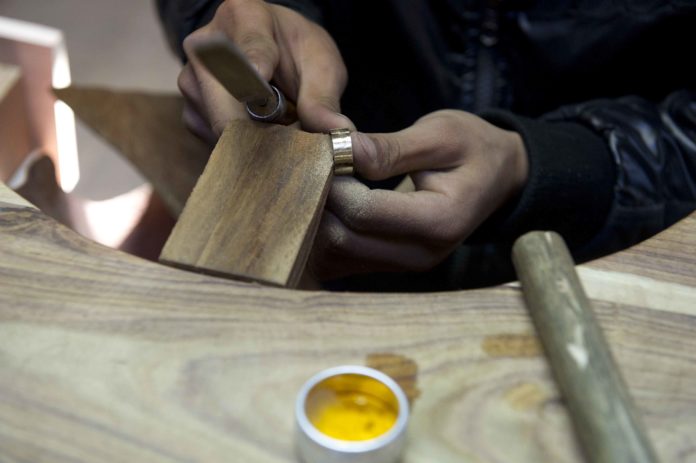Jewellery making in Afghanistan benefits from the rich mineral resources available throughout the country, including precious stones such as emeralds from the Panjshir Valley and rubies from Jegdalek. Lapis lazuli has been mined in Badakshan for over 6,000 years at the Sar-e-Sang deposits of Badakshan, while other semi-precious stones such as kunzite, tourmaline, and turquoise are found in smaller pockets throughout the country. Elaborate jewellery is worn by the nomadic Kuchi tribe as portable wealth, while Afghan brides are decorated with lavish gold jewellery before their wedding.
Hand-carved beads in a myriad of shapes have been crafted from semi-precious stones for millennia, and continue to be made today as a popular home-based industry—particularly for craftswomen. Archaeological finds from sites such as Tillya Tepe attest to the continuity of jewellery forms, not only in simple strings of carved beads, but also luxurious gold jewellery cast, moulded, and decorated with granulation and filigree techniques. Melilla (traditional Afghan filigree metal work) is achieved by twisting very thin wires together, and then forming them into shapes such as loops and whorls. Once individually crafted, the tiny shapes are painstakingly welded together to produce patterns.
Workshops throughout the country continue to practice and pass on these traditions, from master to apprentice. Yet, sadly, much of the mineral wealth is exported, often illegally, although a growing number of Afghan artisans are managing to source high-quality local materials. The Kabul-based jewellery collective Aayenda, developed by Future Brilliance Afghanistan, partners Afghan and foreign jewellery designers with Afghan artists and craftspeople, including a large number of female workers. Turquoise Mountain in Kabul trains students in jewellery and gem cutting at its internationally-acclaimed Institute, where teachers such as Javid Noori, who has collaborated on collections with UK designer Pippa Small, are nurturing the talents of the next generation of Afghan jewellers.
Further reading
Craddock, F. “In Afghanistan, Creating Jewelry in the Midst of Conflict”. The New York Times. September 11, 2014.
Michelsen L.K. et al, Ferozkoh: Tradition and Continuity in Afghan Art. Doha: Bloomsbury Press, 2013.





